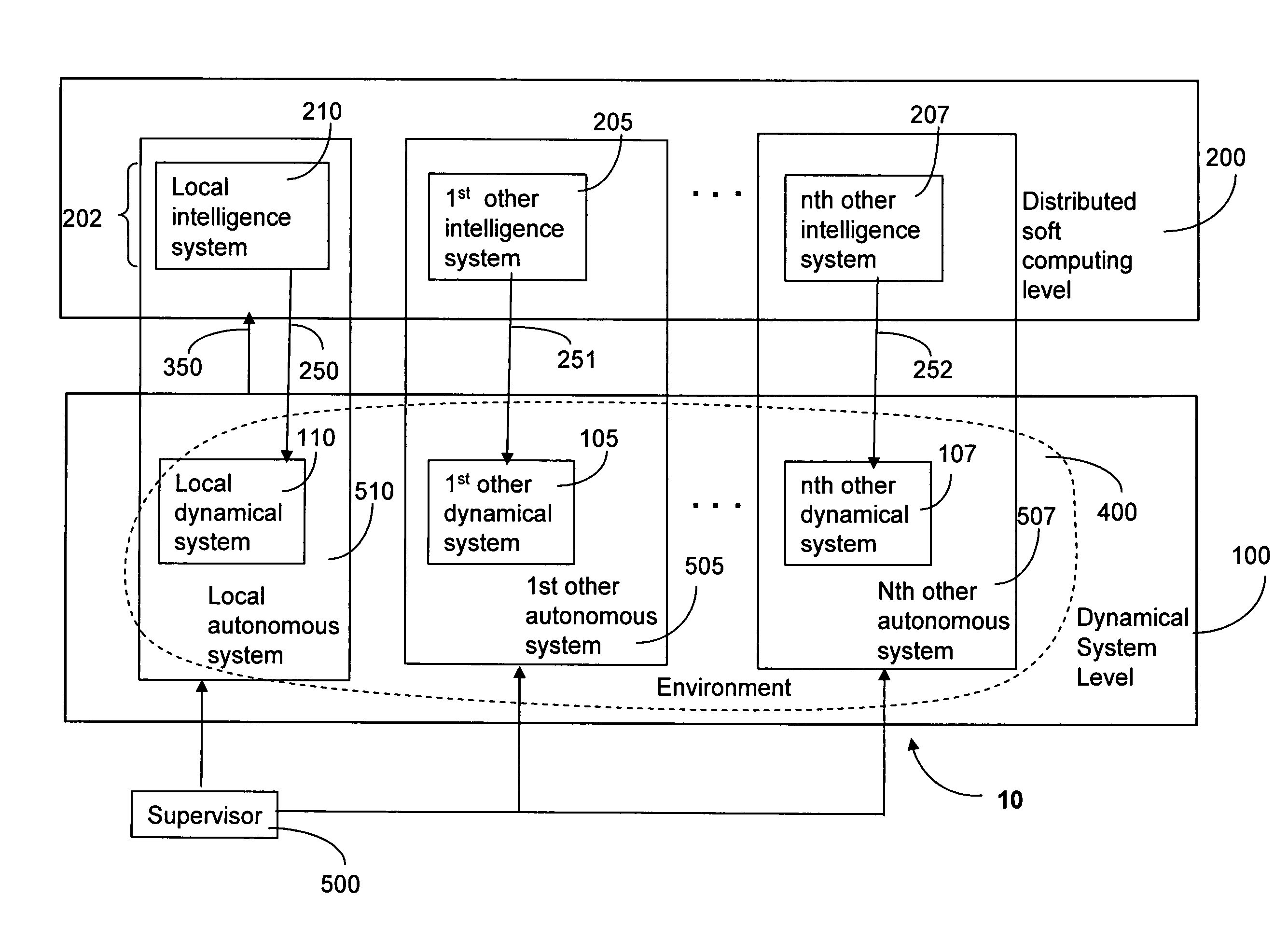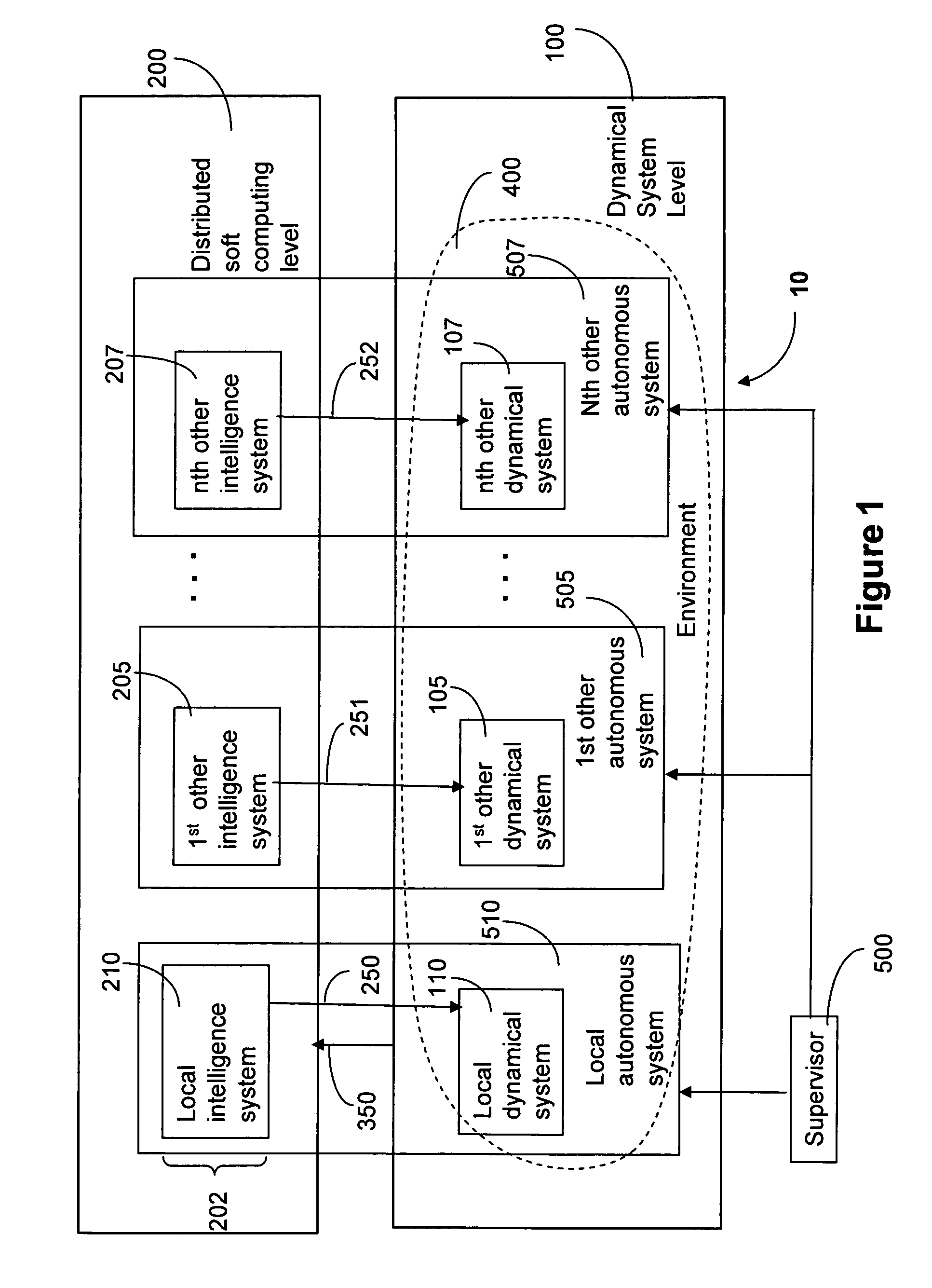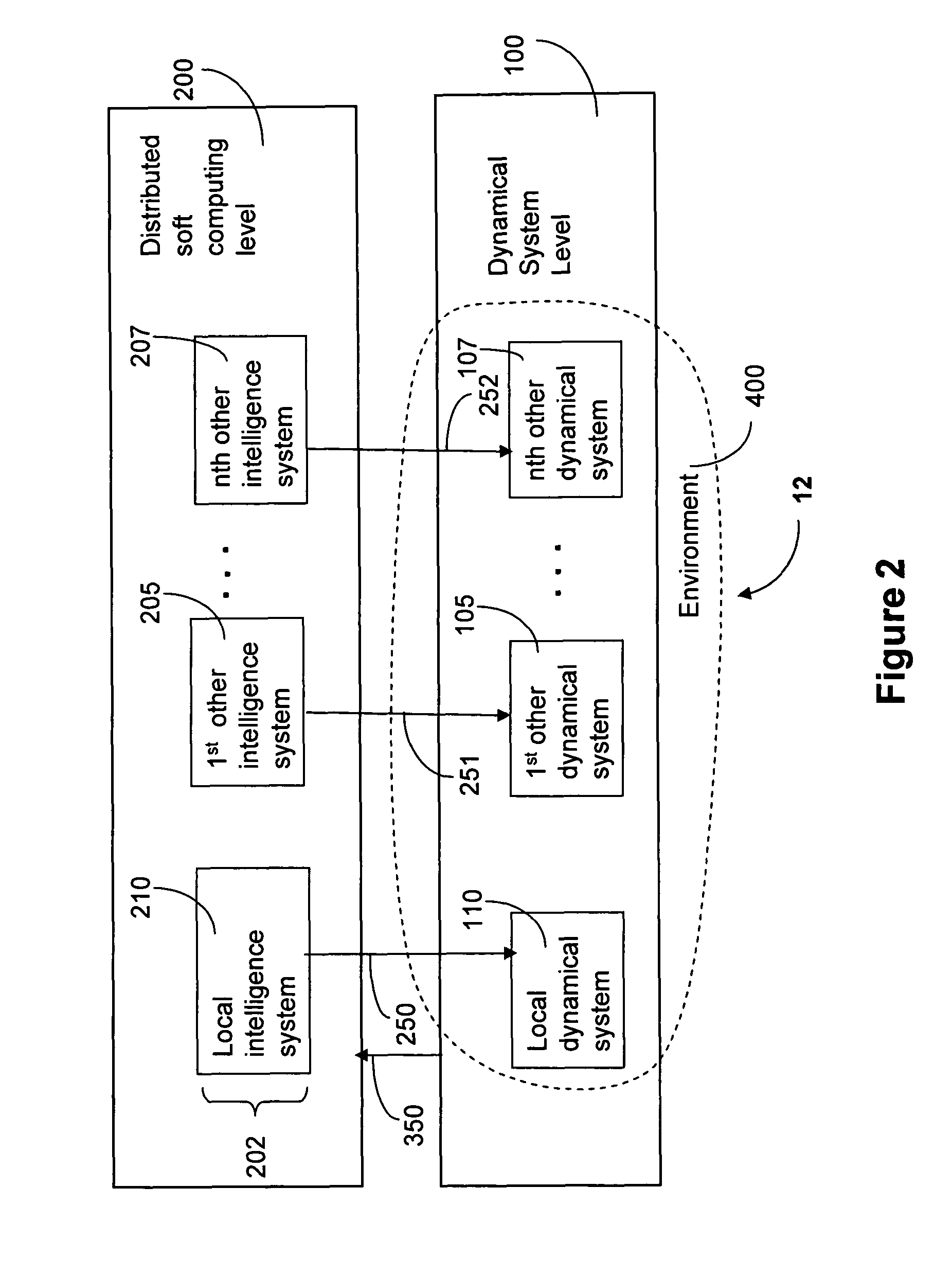Method for soft-computing supervision of dynamical processes with multiple control objectives
a dynamical system and soft-computing technology, applied in the direction of electric controllers, program control, instruments, etc., can solve the problems of unwieldy switching logic required to switch laws or models, conflicting control objectives of dynamical systems, and internal conflicts of uavs, so as to reduce the mode switching of dynamical systems
- Summary
- Abstract
- Description
- Claims
- Application Information
AI Technical Summary
Benefits of technology
Problems solved by technology
Method used
Image
Examples
first embodiment
[0023]FIG. 1 is a box diagram of a system 10 having two levels 100 and 200 to supervise a local dynamical system 110 in accordance with the present invention. Specifically, system 10 includes a dynamical system level 100 and a distributed soft computing level 200. Local dynamical system 110 and “n” other dynamical systems are represented by first other dynamical system 105 and nth other dynamical system 107 where “n” is a positive integer. First other dynamical system 105 and nth other dynamical system 107 are on the dynamical system level 100.
[0024]For purposes of this specification, a dynamical system is a plant or hardware structure with an integrated feedback control system. The feedback received by the dynamical system is internal and external. The system is dynamic since the feedback is continually updated and the hardware is operable to change one or more hardware functions and / or parameters in immediate response to the feedback. Sensors within the dynamical system provide a ...
second embodiment
[0039]FIG. 2 is a box diagram of a system 12 having two levels 100 and 200 to supervise a local dynamical system 110 in accordance with the present invention. System 12 includes the dynamical system level 100 and the distributed soft computing level 200 as described above with reference to FIG. 1. The supervisor 500 is not shown in FIG. 2, but is operable as described above for FIG. 1.
[0040]System 12 differs from system 10 described above with reference to FIG. 1, in that the distributed intelligence system 202 is not physically located in a plurality of autonomous systems. The local intelligence system 210 is remotely located from the local dynamical system 110. First other intelligence system 205 is remotely located from first other dynamical system 105 and nth other intelligence system 207 is remotely located from nth other dynamical system 207. In system 12, the local dynamical system 110 and the other dynamical systems 105 and 107 are semi-autonomous dynamical systems. All the ...
PUM
 Login to View More
Login to View More Abstract
Description
Claims
Application Information
 Login to View More
Login to View More - R&D
- Intellectual Property
- Life Sciences
- Materials
- Tech Scout
- Unparalleled Data Quality
- Higher Quality Content
- 60% Fewer Hallucinations
Browse by: Latest US Patents, China's latest patents, Technical Efficacy Thesaurus, Application Domain, Technology Topic, Popular Technical Reports.
© 2025 PatSnap. All rights reserved.Legal|Privacy policy|Modern Slavery Act Transparency Statement|Sitemap|About US| Contact US: help@patsnap.com



